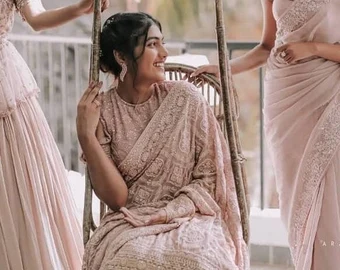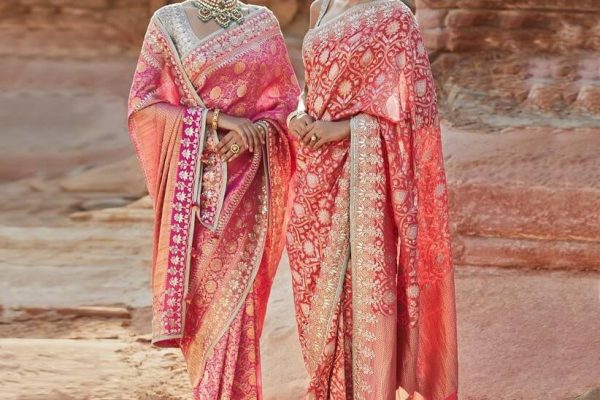In the realm of luxury fashion, where elegance and refinement are the hallmarks of distinction, one material stands out as the epitome of timeless allure: scarf silk. Beyond being just a fabric, scarf silk embodies a sense of sophistication that transcends eras and cultures. Its delicate sheen, sumptuous texture, and exquisite drapery have made it a coveted staple in the wardrobes of those who appreciate the finer things in life.
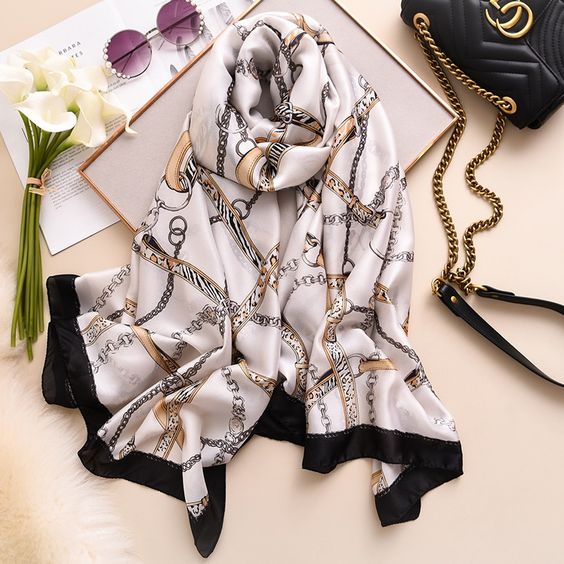
While the phrase “scarf silk” might seem simple, it encapsulates a world of artistry and craftsmanship that transforms raw silk fibers into captivating accessories. This article delves deep into the captivating world of scarf silk, exploring its creation, variations, designs, cultural symbolism, and modern relevance. It’s an invitation to unravel the mysteries behind the enchanting material that has graced the shoulders of emperors, the necks of movie stars, and the runways of high fashion.
Scarves have been a part of human attire for centuries, serving practical and symbolic purposes. Yet, it’s the introduction of silk into this accessory that elevates it to the realm of opulence. Scarf silk is the result of a meticulous process that begins with sourcing the finest silk fibers, typically derived from the Bombyx mori silkworms that feast on mulberry leaves. These fibers undergo delicate treatment to ensure their smoothness and strength, setting the foundation for the luxurious experience that a scarf silk provides.
Artisans, often with generations of knowledge, meticulously weave these silk fibers using intricate techniques that have been passed down through time. These craftsmen employ their skill to create patterns, textures, and finishes that transform the silk into a canvas of elegance. The weaving process influences the scarf silk’s final attributes: its texture, its shimmering luster, and its durability. Each scarf silk thus becomes a masterpiece, a fusion of nature’s silk and human artistry.
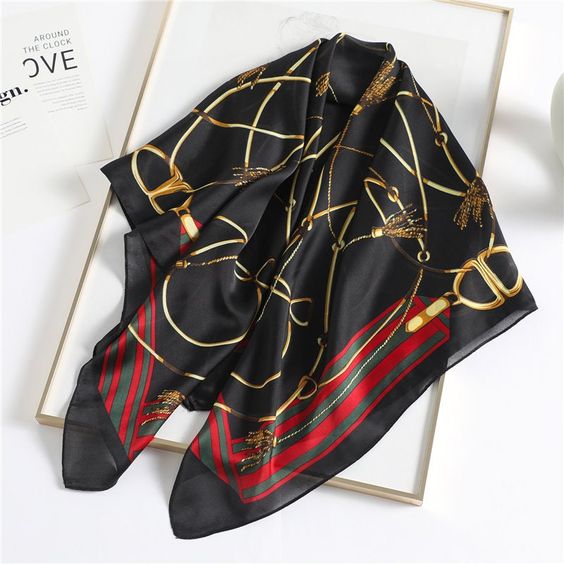
But the story of scarf silk doesn’t end with its creation. It continues into the realm of design, where color and pattern selection play a pivotal role. The allure of scarf silk lies not only in its material but also in its visual appeal. Vibrant hues and intricate patterns draw attention, and they are meticulously chosen to evoke emotions and complement various outfits. From classic paisley motifs to modern abstract designs, scarf silk offers a vast canvas for expression and creativity.
As a versatile accessory, scarf silk transcends mere decoration. It’s a versatile item that can be worn in countless ways, from draping it elegantly around the neck to adorning it as a headscarf or using it as an accent on handbags and clothing. Whether in casual or formal settings, scarf silk effortlessly adds a touch of sophistication to any ensemble, making it a staple in the wardrobes of fashion-conscious individuals worldwide.
Intriguingly, scarf silk isn’t just a fashion statement; it often carries a rich cultural significance. Across the globe, scarves have been used to convey social status, express cultural identity, and celebrate traditions. From the intricate keffiyehs of the Middle East to the vibrant kimonos of Japan, scarf silk has been a canvas for cultural narratives, a way to communicate heritage and values without words.
9 Best Mini Sewing Machines: Hands-on Review & Buyer’s Guide
The Art of Crafting Scarf Silk
The creation of scarf silk is a delicate and intricate process that combines the finest silk fibers with the skillful hands of artisans. It begins with the careful selection of the silk itself, often sourced from silkworms that feed on mulberry leaves, resulting in the renowned Mulberry silk. This particular silk is preferred due to its luxurious texture, exceptional sheen, and durability. The process of obtaining the silk fibers involves carefully unraveling the cocoons spun by silkworms, a task that demands precision to avoid damaging the delicate threads.
Once the raw silk is obtained, the weaving process begins. Skilled artisans use various weaving techniques, such as the intricate Charmeuse weave or the lightweight Habotai weave, to create the distinctive texture and draping qualities that characterize scarf silk. The weave chosen greatly influences the final appearance and feel of the scarf. The threads are meticulously woven together, creating a fabric that boasts both strength and suppleness, resulting in scarves that are not only visually stunning but also a pleasure to wear.
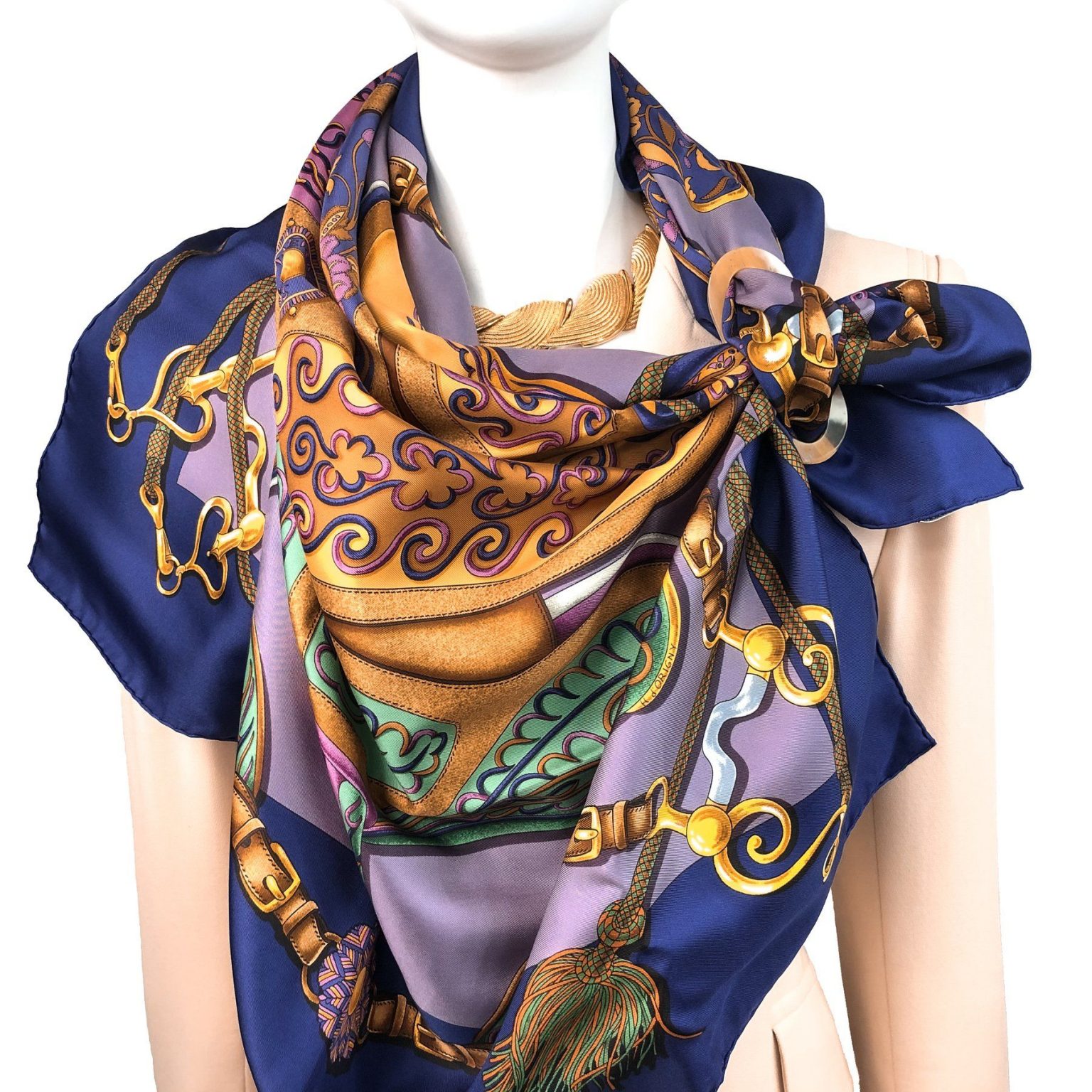
The dyeing process is another crucial stage in crafting scarf silk. Artisans employ a range of dyeing methods to infuse the silk with an array of rich and vibrant colors. The dye adheres to the silk fibers in a way that preserves their natural luster, ensuring that the scarf retains its luxurious shine even after being dyed. This attention to detail is what sets scarf silk apart from other fabrics, as each step in the crafting process is executed with precision and care.
In addition to the weaving and dyeing processes, the finishing touches complete the creation of scarf silk. The edges of the scarf are carefully hemmed, often by hand, to ensure a polished and refined look. This detail not only adds to the aesthetic appeal of the scarf but also contributes to its durability, preventing fraying and maintaining the scarf’s overall quality over time.
In essence, crafting scarf silk is a true labor of love that involves expertise honed over generations. It marries age-old traditions with modern techniques to produce a textile that embodies luxury and sophistication. From the selection of the finest silk fibers to the intricacies of weaving and dyeing, every step in the process is a testament to the dedication of artisans who have perfected the art of creating scarf silk. As a result, each scarf silk becomes not just an accessory, but a work of art that carries with it the legacy of craftsmanship and elegance.
The Silk Varieties for Luxurious Scarves
When it comes to crafting luxurious scarves, the choice of silk variety plays a pivotal role in determining the scarf’s overall quality, texture, and visual appeal. Among the most renowned silk varieties used in the creation of these exquisite accessories are Mulberry silk, Charmeuse silk, and Habotai silk.
Mulberry Silk: Revered as one of the finest and most sought-after silk types, Mulberry silk is derived from the silkworms of the Bombyx mori moth. This silk variety is celebrated for its exceptional softness, natural sheen, and remarkable durability. Scarves made from Mulberry silk are renowned for their luxurious texture that glides smoothly against the skin. The silk’s ability to absorb vibrant dyes results in scarves that boast a rich and long-lasting color palette, making them captivating fashion statements.
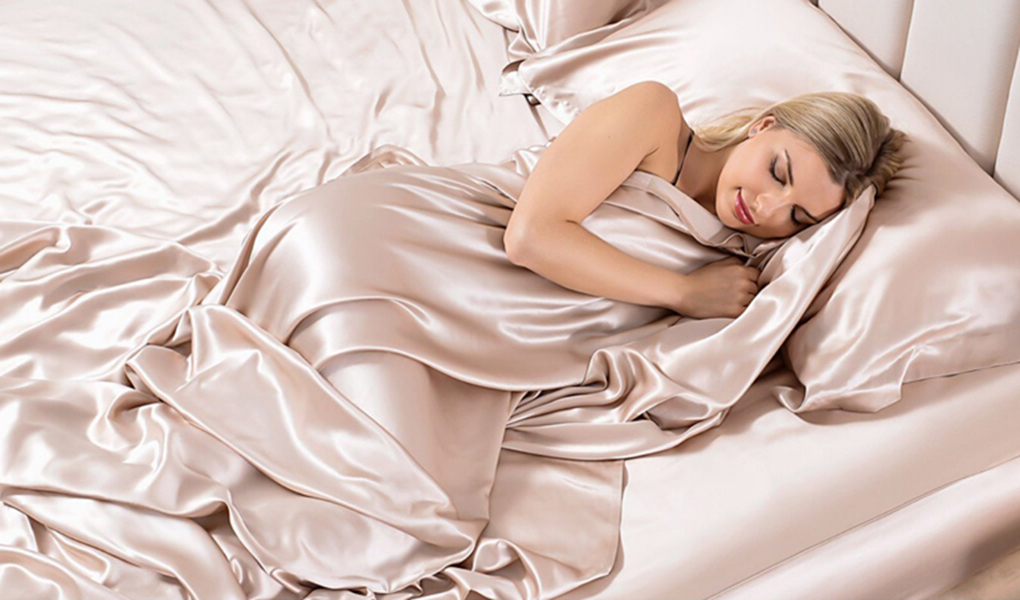
Charmeuse Silk: Renowned for its elegant drape and high-gloss finish, Charmeuse silk is synonymous with sophistication. Its smooth and reflective surface imparts a lustrous shine to scarves, enhancing their visual allure. Charmeuse silk scarves are favored for their ability to catch and reflect light, creating a play of colors and shadows that add depth to any outfit. This silk variety is often chosen for scarves that demand a touch of opulence and are intended to be worn during special occasions.
Habotai Silk: Also known as “China silk,” Habotai silk is characterized by its lightweight and delicate nature. This silk type is valued for its smooth texture and fluid drape, making it ideal for scarves that can be effortlessly styled in various ways. Habotai silk scarves are known for their versatility, making them suitable for both casual and more formal settings. Despite their lightweight feel, these scarves exude a sense of elegance that adds a touch of refinement to any ensemble.
8 Best Sewing Scissors: Hands-on Reviews & Buyer’s Guide
Colors and Designs: Enhancing the Aesthetics
The allure of scarf silk lies not only in its luxurious texture but also in the captivating world of colors and designs that it offers. The careful selection of colors and the intricacy of patterns play a pivotal role in elevating the aesthetics of scarf silk, making it a truly enchanting accessory.
Vibrant Palette and Intricate Patterns: Scarf silk presents a canvas for an array of vibrant hues that burst forth in a kaleidoscope of colors. From deep, rich jewel tones to soft pastels, the spectrum of possibilities is endless. Each color tells a story, evoking emotions and complementing various outfits and moods. Whether it’s an opulent red that exudes confidence, a serene blue that conveys tranquility, or a playful mix of hues that brings out a sense of fun, scarf silk’s color choices are an art form in themselves.
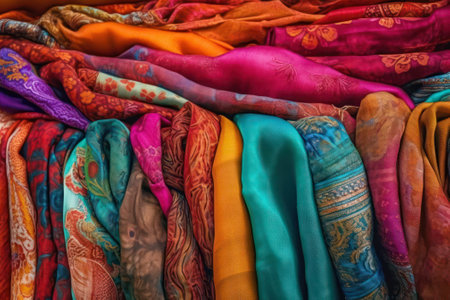
Accompanying these colors are the exquisite patterns that grace scarf silk. The delicate intricacy of floral motifs, the geometry of abstract shapes, and the elegance of paisley designs transform scarf silk into wearable art. These patterns not only enhance the aesthetics of the scarf but also reflect the craftsmanship and attention to detail invested in its creation. Whether the patterns are traditional or contemporary, they contribute to the scarf’s uniqueness and make it a personal statement of style.
Versatility in Styling: The beauty of scarf silk’s colors and patterns lies in their ability to be versatile. A scarf silk accessory can effortlessly transition from a casual daytime look to an elegant evening ensemble. A vibrant, patterned scarf can add a pop of color to a monochromatic outfit, while a subtler, muted design can complement a bold attire. The drape and flow of scarf silk allow for creative styling, whether it’s casually knotted around the neck, draped over the shoulders, or tied as a chic headscarf.
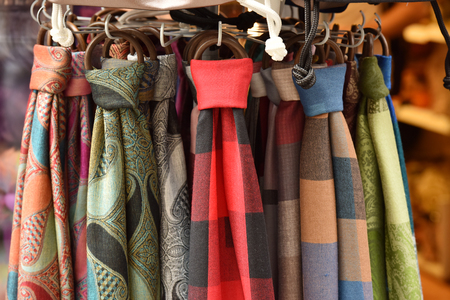
Styling with Scarf Silk: Fashion and Versatility
Scarves made from luxurious silk transcend mere accessories, becoming essential elements in creating stunning fashion statements. Their versatility allows them to seamlessly blend into any outfit, adding a touch of elegance and sophistication. From casual outings to formal events, scarf silk can be creatively styled in various ways, making them a must-have accessory for fashion-forward individuals.
When it comes to styling with scarf silk, the options are virtually limitless. For a chic everyday look, drape a vibrant silk scarf around your neck, letting it cascade down the front of a simple blouse or T-shirt. This effortless style adds a pop of color and texture, instantly elevating your ensemble. To exude a touch of vintage glamour, channel iconic Hollywood stars by tying a silk scarf around your head, creating a glamorous headband or turban. This versatile style not only keeps your hair in place but also adds a dash of retro charm.
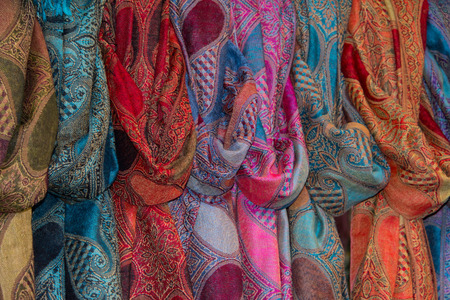
For more formal occasions, transform a plain dress or gown into a captivating ensemble by using a scarf silk as an exquisite belt. Simply loop it through your belt loops and tie it in a delicate bow or a stylish knot – this accentuates your waistline while infusing a touch of luxury. Alternatively, let your creativity soar by using a scarf silk as a statement accessory for your handbag. Tie it around the handle or weave it through the hardware for a unique and personalized touch.
Scarf silk’s adaptability extends beyond clothing. Use it as a sarong or a beach cover-up during sunny getaways, or tie it around your wrist to create a trendy bracelet. Embrace your inner artist by wearing it as a bandana or create a halter top for a playful and summery look. In cooler weather, wrap a larger silk scarf around your shoulders like a shawl to stay warm while exuding elegance.
To fully harness the fashion potential of scarf silk, consider experimenting with layering. Pair a patterned silk scarf with a solid-colored outfit to create a striking contrast, or coordinate the scarf’s hues with elements in your ensemble to achieve a harmonious look. Remember that scarf silk is not confined to a single use; you can fold, twist, and tie it in countless ways to complement your personal style and the mood of the occasion.
The Symbolism and Culture of Scarf Silk
Scarves crafted from exquisite silk hold a deeper significance beyond their aesthetic appeal. Across different cultures and histories, scarf silk has served as a symbol of cultural identity, status, and tradition. In many societies, these luxurious accessories carry stories that transcend their material form.
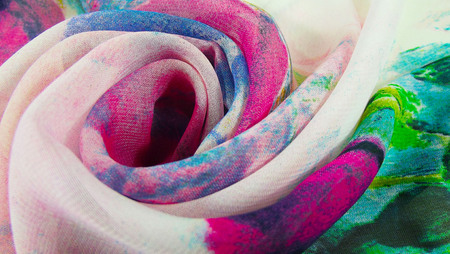
Cultural Significance: Scarf silk has often been intricately woven into the fabric of cultural expression. In regions like Asia, silk has historical roots that span centuries, embodying the essence of tradition and heritage. For instance, in China, the birthplace of silk, the fabric has been regarded as a symbol of prosperity, elegance, and social class. The Chinese silk scarf, adorned with intricate designs and patterns, showcases the country’s artistic legacy. Similarly, the use of silk scarves in India’s diverse cultures is a testament to its rich history, with each region weaving its unique narrative through vibrant colors and motifs. Scarf silk becomes a canvas for preserving cultural stories, passed down through generations.
Status and Elegance: Throughout history, scarf silk has also denoted status and sophistication. In societies where silk was a rare and prized material, owning a silk scarf was synonymous with affluence and social standing. European nobility and royalty often draped themselves in silk, with the fabric signifying opulence and refinement. Scarf silk’s connection with elegance persists to this day, as wearing a silk scarf elevates an outfit to a level of understated luxury.
Modern Resonance: As cultures evolve, scarf silk’s symbolism continues to evolve as well. It’s not just about preserving traditions but also about adapting them to modern contexts. Contemporary designers often draw inspiration from cultural motifs, reimagining them in fresh and innovative ways. Scarf silk collaborations between fashion houses and indigenous artisans bridge the gap between past and present, creating pieces that resonate with a global audience while respecting cultural roots.
Caring for Scarf Silk: Maintenance and Preservation
Proper maintenance and preservation are essential to ensure that your scarf silk retains its exquisite beauty and durability over time. Taking the right steps to care for your scarf silk will not only extend its lifespan but also maintain its luxurious feel and vibrant appearance.
Cleaning and Storage: When it comes to cleaning your scarf silk, it’s important to adopt a gentle approach. Handwashing is the preferred method, using cold water and a mild, silk-friendly detergent. Avoid harsh chemicals and vigorous rubbing that could damage the delicate fibers. Gently agitate the scarf in the soapy water and then rinse thoroughly, ensuring all soap residue is removed. Remember, silk is sensitive to temperature changes, so avoid drastic fluctuations during washing. Once clean, place the scarf on a clean, absorbent towel and roll it up to gently remove excess water before laying it flat to air dry.
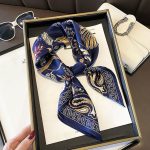

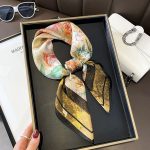
Proper storage is equally crucial to prevent snags, wrinkles, and discoloration. Avoid hanging silk scarves, as this could lead to distortion. Instead, fold your scarf neatly and place it in a breathable fabric pouch or a lined jewelry box to protect it from dust and light. If hanging is the only option, use padded hangers to minimize stress on the delicate fibers.
Precautions: To preserve the silk’s natural luster and color, keep your scarf silk away from direct sunlight. Prolonged exposure to UV rays can lead to fading and deterioration of the fabric. Additionally, be cautious around sharp objects and jewelry that could snag or tear the delicate fibers. If your scarf silk does get snagged, do not pull on it. Instead, carefully use a fine-tipped needle to gently push the snagged thread back into place.
It’s worth noting that perfume, hairspray, and other chemicals can adversely affect silk fibers. Avoid applying these substances while wearing your scarf silk to prevent any potential damage. If a spill does occur, gently blot the area with a clean, damp cloth and allow it to air dry.
The Contemporary Appeal of Scarf Silk
In a world where fashion trends come and go with the seasons, scarf silk has managed to maintain its timeless charm while seamlessly integrating into the contemporary fashion landscape. This luxurious accessory, once associated with a bygone era, has experienced a resurgence in popularity, capturing the hearts of both seasoned fashion connoisseurs and trendsetting millennials alike.
1. Modern Interpretations and Designs
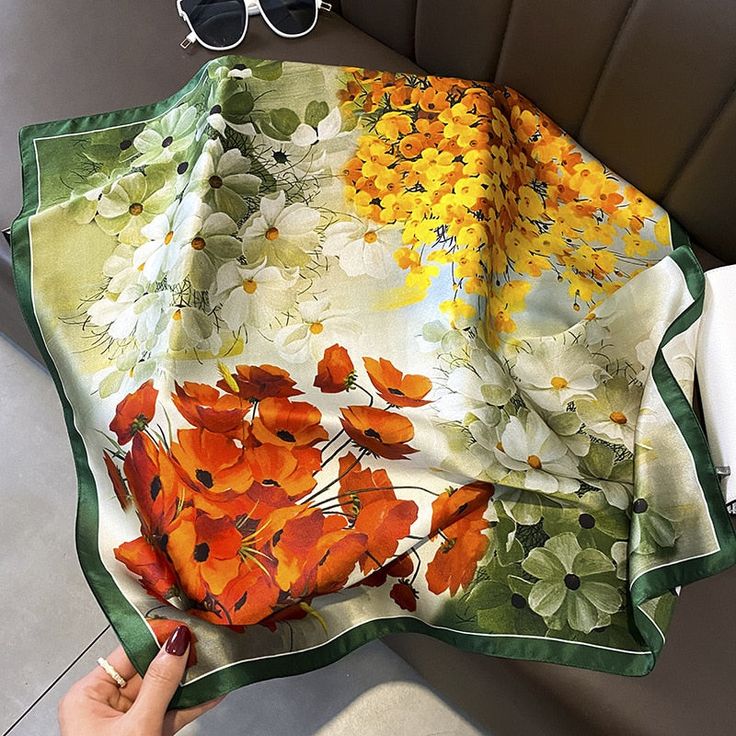
Designers and fashion houses have reimagined scarf silk, infusing it with fresh creativity and modern aesthetics. Traditional patterns have been reinvented with a contemporary twist, incorporating abstract motifs, bold color combinations, and innovative graphics. These design innovations have breathed new life into scarf silk, making it a statement piece that effortlessly merges classic elegance with modern flair.
2. Versatility and Styling Possibilities
One of the factors contributing to the enduring popularity of scarf silk is its incredible versatility. No longer confined to being draped solely around the neck, scarf silk has found its way into diverse styling options. From being worn as headscarves, tied around ponytails, or even creatively knotted onto handbags, scarf silk provides an array of styling possibilities that cater to various occasions and personal preferences. This adaptability makes scarf silk a go-to accessory for those seeking to express their individuality through fashion.
3. Sustainable and Ethical Appeal
In an era where sustainable and ethical fashion practices are gaining prominence, scarf silk has positioned itself as a conscientious choice. Many manufacturers are committed to using ethically sourced silk and environmentally-friendly production methods. This alignment with sustainability trends has resonated with environmentally-conscious consumers, giving scarf silk an additional layer of appeal beyond its aesthetic allure.
4. Celebrity Endorsement and High-Profile Collaborations
The contemporary appeal of scarf silk is further amplified by its endorsement by celebrities and high-profile collaborations. A-list stars and fashion influencers have been spotted adorning scarf silk in various innovative ways, showcasing its adaptability and elegance. Moreover, collaborations between luxury fashion houses and renowned artists or designers have led to limited-edition scarf silk collections that blend artistic vision with luxurious craftsmanship. These collaborations have transformed scarf silk into collector’s items, coveted not only for their aesthetic value but also their cultural significance.
5. Nostalgia and Heritage Revival
The resurgence of scarf silk is often intertwined with a sense of nostalgia and a longing for the grace and sophistication of the past. As contemporary fashion trends frequently draw inspiration from different eras, scarf silk encapsulates the essence of timeless elegance. By wearing scarf silk, individuals not only embrace the allure of luxury but also connect with a sense of heritage and cultural continuity.
6. Redefining Luxury
In a world saturated with mass-produced items, scarf silk stands as a symbol of refined taste and exclusivity. The contemporary appeal of scarf silk lies in its ability to redefine luxury by focusing on quality, craftsmanship, and individuality. As consumers shift towards valuing experiences and authenticity over fleeting trends, scarf silk caters to those who seek unique, enduring pieces that transcend the disposable nature of fast fashion.
Final Words
In the realm of luxury fashion, where trends come and go, scarf silk stands as an eternal symbol of elegance and sophistication. Throughout this journey, we’ve delved into the intricate artistry behind crafting scarf silk, explored the diverse silk varieties that contribute to its allure, marveled at the kaleidoscope of colors and designs that enhance its aesthetics, and learned how to effortlessly incorporate it into our daily fashion choices. We’ve also unraveled the cultural and historical tapestry that interweaves with scarf silk, and we’ve discovered the secrets to preserving its timeless charm.
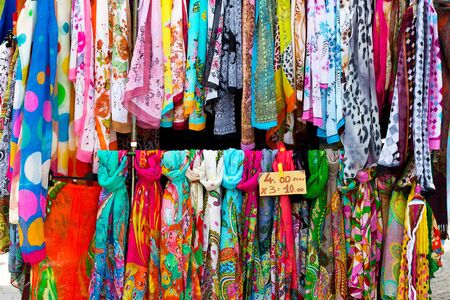
As we reflect on the world of scarf silk, it becomes evident that this luxurious accessory is not just a fashion statement; it’s a testament to human creativity, craftsmanship, and the enduring power of beauty. The artisans who carefully select the finest silk fibers and skillfully weave them into intricate patterns are custodians of tradition and creators of art. Their meticulous work transforms mere threads into wearable masterpieces that drape elegantly around our necks, shoulders, and even our imaginations.
From the delicate touch of Mulberry silk to the shimmering allure of Charmeuse silk, each variety has its own story to tell, whispered through its texture, luster, and graceful drape. Scarf silk’s ability to effortlessly elevate any outfit, from casual to formal, makes it a true chameleon in the world of fashion. It wraps us in a cocoon of elegance, reminding us that style knows no bounds and that every accessory can be a canvas for self-expression.
Beyond its beauty, scarf silk carries a weight of history and culture. It has graced the necks of monarchs and artists, adorned tribal rituals, and embodied the essence of luxury. Throughout the centuries, its meaning has evolved, becoming an emblem of social status, cultural identity, and artistic expression. This enduring significance only serves to solidify scarf silk’s place in the annals of fashion history.
Maintaining the allure of scarf silk requires a delicate balance between enjoyment and preservation. With the right care, it can be cherished for generations, passing on its legacy and timeless charm to those who appreciate the finer things in life. The act of caring for scarf silk is a gesture of respect for the craftsmanship that went into its creation—a way to honor the labor of love that brought it to life.
In the modern fashion landscape, where innovation reigns supreme, scarf silk continues to captivate designers and consumers alike. It effortlessly traverses time, proving that true luxury transcends fads and stands the test of time. As fashion houses collaborate with artists and experiment with new techniques, scarf silk’s allure remains undiminished, reaffirming its role as a true icon of style and refinement.
In the end, scarf silk isn’t merely a fabric; it’s a narrative woven from threads of history, culture, and creativity. It’s an embodiment of the exquisite, a symbol of the timeless pursuit of beauty, and a tangible reminder that sometimes the most luxurious things in life are the ones that bring us closer to the essence of our humanity. So, whether you’re draping it elegantly around your shoulders or simply admiring its intricate patterns, remember that scarf silk isn’t just an accessory—it’s a work of art that continues to inspire and enchant, embodying the very essence of elegance.


